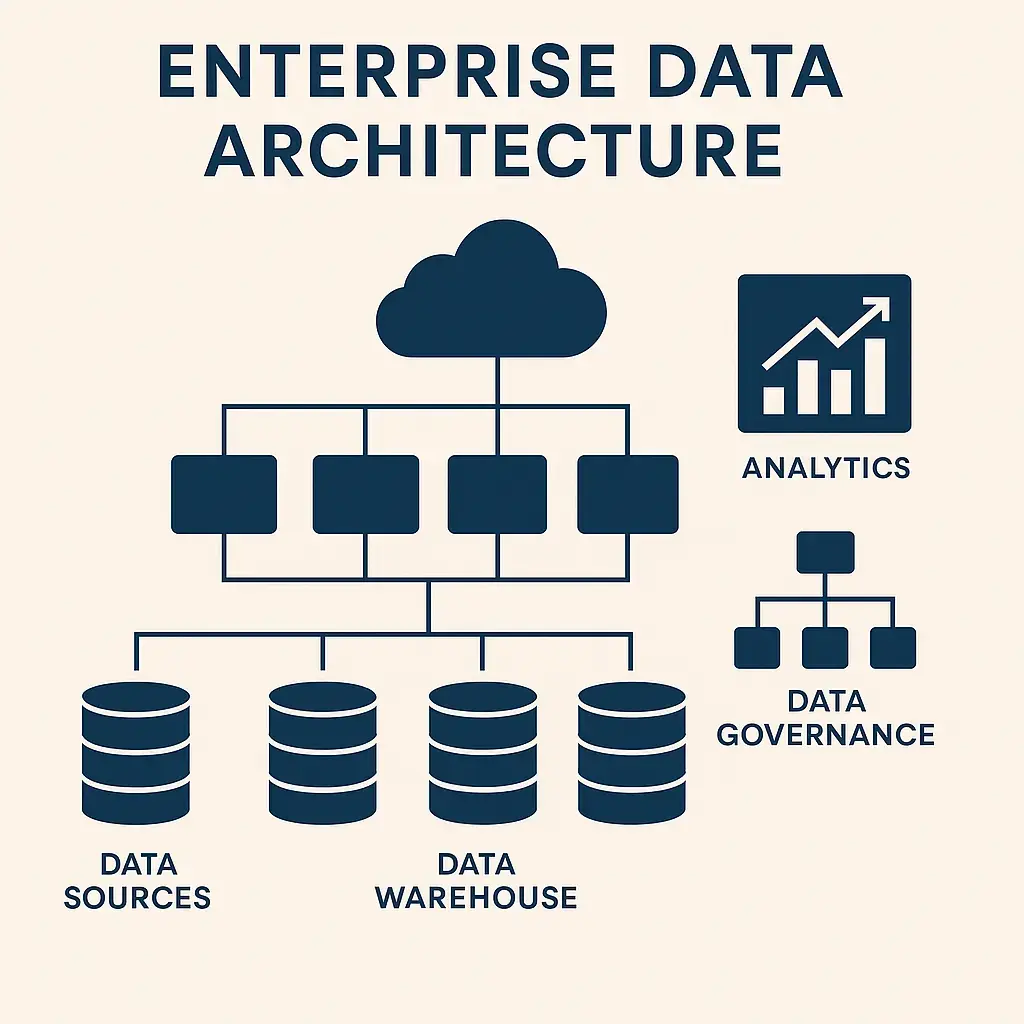
Mapping HubSpot to Enterprise Data Architecture: A Technical Approach
Enterprise-level businesses run on data. But when the CRM is misaligned with how the business truly operates, the friction adds up: scattered reports, manual workarounds, and a team that loses confidence in the system.
HubSpot is known for being flexible and user-friendly, but scaling companies often hit a wall when trying to model complex business realities—like multi-entity structures, custom lifecycle logic, or shared ownership models. The good news? With the right strategy and schema planning, HubSpot can absolutely reflect your enterprise data architecture.
In this guide, we walk through how to approach data architecture in HubSpot with a technical lens—mapping schema elements, addressing common enterprise use cases, and unlocking the full potential of your CRM.
Why Data Architecture Matters in HubSpot
Data architecture is not about "organizing contacts." It's about:
-
Defining how your CRM reflects your operational reality
-
Establishing relationships between objects that match business rules
-
Ensuring data integrity across automation, reporting, and sales enablement
REMEMBERWithout thoughtful schema planning, businesses face inconsistent reporting, duplicated records, and logic that has to be enforced manually across teams. In enterprise settings, this isn't just inefficient, it breaks scale.
Here are three common patterns we encounter when mapping enterprise CRM data into HubSpot:
1. Parent–Child Company Relationships
Most CRMs treat "companies" as a flat object. But in real life, companies often exist in hierarchical structures—holding companies, subsidiaries, local branches, etc. HubSpot Solution: Use custom properties and company-to-company associations. With Operations Hub or custom development, you can define parent-child structures and inherit metadata or engagement rules.
2. Multiple Owners per Object
Sales teams with regional overlays, channel partners, or layered responsibility models often need to assign more than one owner to a record. HubSpot Solution: HubSpot natively supports only one "owner" property per object. The workaround? Add custom owner fields (e.g., SDR owner, AE owner, CSM owner) and use teams, workflows, and permissions to align visibility and responsibility.
3. Lifecycle Stage at the Child Level
In multi-location businesses, each subsidiary or branch may have its own buyer journey. Tracking lifecycle stage at the parent level can obscure progress.
HubSpot Solution: Rather than relying solely on contact or parent company lifecycle, introduce child-level lifecycle stages and sync them via custom automation. Use custom properties, calculated fields, and reporting filters to track conversion paths accurately.
Mapping HubSpot Schema to Enterprise Needs
When designing your CRM schema in HubSpot, think like a data architect:
-
Objects: Contacts, Companies, Deals, Tickets, Custom Objects
-
Associations: Many-to-many relationships (e.g., contact <> multiple deals)
-
Properties: Metadata that drives logic, segmentation, and automation
-
Events & Activities: Logged touchpoints that influence scoring and stage
HubSpot’s Schema Mapping Flexibility
Use Data Model Overview (in Operations Hub Enterprise) to visualize relationships. For complex environments:
-
Deploy custom objects to represent unique operational entities.
-
Leverage webhooks or external APIs to keep external databases in sync.
-
Use custom-coded actions in workflows for conditional logic beyond native capabilities
Real-World Example: Structuring a Global Franchise
Let’s say you're mapping data for a global franchise system:
-
Each parent company is the franchise brand.
-
Each child company is a local franchisee.
-
Each contact may relate to one or more locations.
-
Each deal is tied to a location but needs to roll up reporting to the parent.
With HubSpot, this structure is possible by using:
-
Company-to-company associations
-
Parent ID fields and lookup syncing
-
Custom lifecycle paths for each franchisee
-
Rollup reports using Enterprise reporting tools
This setup not only ensures accurate data governance across regions, but also allows corporate to track performance, support compliance, and tailor engagement strategies by geography.
Best Practices for HubSpot Data Architecture
Define business rules before building Document lifecycle stages, ownership models, and data hierarchies Keep schema documentation updated Use HubSpot's data model tool or tools like Lucidchart for version control Use calculated properties over duplication Avoid syncing values manually between parent and child records Limit manual field creation Every new field should have a reporting, segmentation, or automation use Audit associations quarterly Broken links lead to failed automations and misleading reports
Architect for Growth, Not Just Function
HubSpot can do more than manage contacts it can mirror your most intricate business structures when configured with architectural intent. Whether you’re managing subsidiaries, shared ownership models, or unique lifecycle journeys, the right schema unlocks operational clarity and strategic agility. Enterprise CRM design isn’t about complexity for its own sake, it’s about enabling scale, accuracy, and alignment.
At Triario, we specialize in architecting HubSpot to match complex data environments so your CRM becomes a true reflection of how your business operates and scales.
Marketing Director at Triario. Social communicator with emphasis on journalism, digital marketing, and advertising. A frustrated Egyptologist, journalist at heart but dedicated to marketing and sales. She writes, sells, budgets, markets—nothing is too big for her! Always a nerd.
Triario's Blog
Subscribe to our Blog and don’t miss anything!
¿Te gusta nuestro contenido?
Publicamos nuevo contenido cada semana. Suscríbete aquí y mantente al día con las noticias más relevantes del marketing digital.





